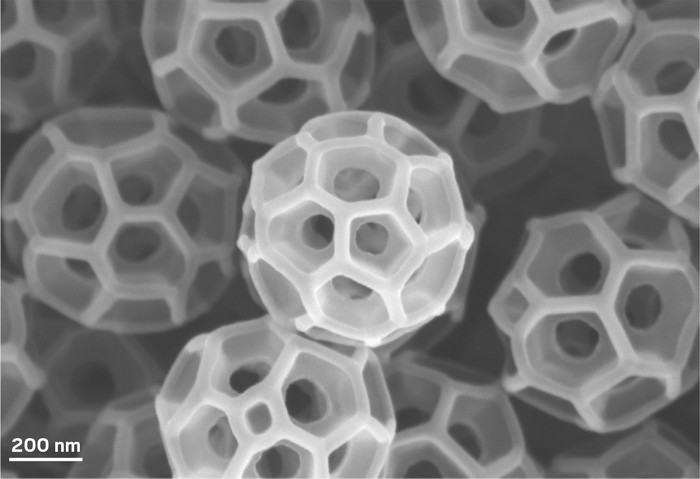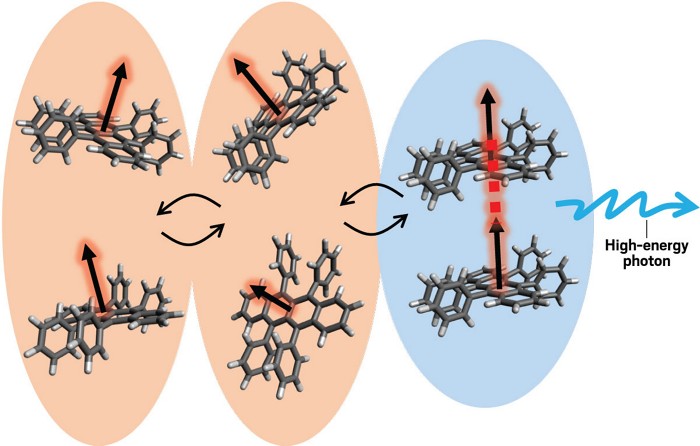Advertisement
Grab your lab coat. Let's get started
Welcome!
Welcome!
Create an account below to get 6 C&EN articles per month, receive newsletters and more - all free.
It seems this is your first time logging in online. Please enter the following information to continue.
As an ACS member you automatically get access to this site. All we need is few more details to create your reading experience.
Not you? Sign in with a different account.
Not you? Sign in with a different account.
ERROR 1
ERROR 1
ERROR 2
ERROR 2
ERROR 2
ERROR 2
ERROR 2
Password and Confirm password must match.
If you have an ACS member number, please enter it here so we can link this account to your membership. (optional)
ERROR 2
ACS values your privacy. By submitting your information, you are gaining access to C&EN and subscribing to our weekly newsletter. We use the information you provide to make your reading experience better, and we will never sell your data to third party members.
Photonics
Quantum dots patterned using heat instead of UV light
Laser heating creates fine patterns of quantum dots for high-resolution color displays
by Prachi Patel, special to C&EN
July 1, 2022

The brilliant, pure color that quantum dots (QDs) emit make them enticing materials for next-generation displays. But existing techniques cannot deposit patterns of these semiconductor nanocrystals at the resolution needed for high-definition screens. A new way to pattern QDs using heat could be a solution (J. Am. Chem. Soc. 2022, DOI: 10.1021/jacs.2c03672).
Some commercially available displays produce color by passing the light from blue LEDs through large QD films as color filters, converting the blue light into brilliant green and red. But manufacturers want to make sharper, more vibrant flexible, displays made of patterns of micrometer-sized pixels, each composed of a blue LED coated in part with a tiny amount of red and green QDs.
One way to pattern QDs is to deposit a solution of nanocrystals that have been decorated with light-responsive ligands onto a substrate and then shine ultraviolet light on them. The QDs solidify into patterns only where the light hits. Dmitri Talapin, a chemist at the University of Chicago, reported this UV-based photochemical method 5 years ago (Science 2017, DOI: 10.1126/science.aan2958). However, the size of the pattern features is limited by the wavelength of the light, and the smallest resolution the researchers achieved was around 800 nm. Shorter UV wavelengths needed to make even finer patterns can damage QDs, Talapin says.
Also, QD films need to be several micrometers thick to completely absorb blue LED light and convert it to red or green in a display. But the UV light used for patterning typically gets absorbed in QD films within 100 nm or so. Patterning thicker films requires longer exposure to give the light a chance to penetrate deeper, but this creates defects in the material that trap photons and bring down luminescence.
To get around using UV light, Talapin and his colleagues made an ink of QDs to which they had attached heat-sensitive ligands. They spin-coated or printed the ink onto various surfaces and then drew a pattern on the coating with a laser beam. Wherever the laser hit, the heat broke off the ligands, and the nanocrystals fused to form a solid material.
The technique works with any wavelength of light that can be absorbed as heat by the ligand, the nanomaterial, or the substrate, Talapin says. The ability to use a wide range of light sources could bring down cost and make scale-up easy. Plus, by using longer-wavelength visible and infrared light, the researchers could pattern up to 1.2 µm thick layers of nanomaterials.
Semiconductor QDs patterned with the laser-heating process retained nearly 80% of their luminescence, compared with about 40% for patterned QDs made using photochemical methods.
Jonathon Harwell of the University of St. Andrews says that the choice of substrate with this method would be limited. The substrate “must be very thermally insulating but also able to absorb your pump laser, so would [the method] work for patterning directly on an array of LEDs?” he asks. But the resolution of around 500 nm is impressive, he says, and the group’s use of cheap and readily available equipment is a big advantage.
Talapin says he is optimistic about the new technology but acknowledges that “translation of this technology to a real manufacturing workflow will require a lot of tailoring of the protocol.”




Join the conversation
Contact the reporter
Submit a Letter to the Editor for publication
Engage with us on Twitter